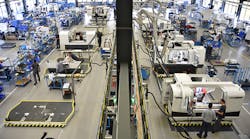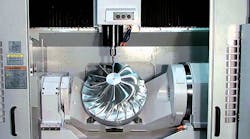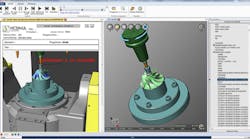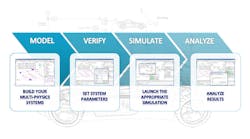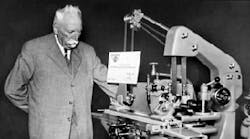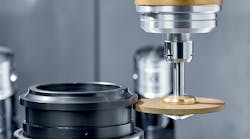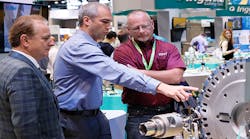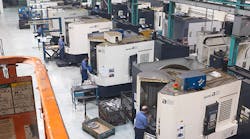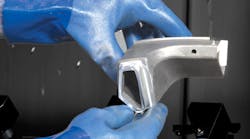The International Manufacturing Technology Show can be an exercise in wish fulfillment for many machine shops and other manufacturers, hoping to find the one tool or machine, or program that will resolve some ongoing problem. For others, the dream is even grander, like embracing the networking capability that will simplify maintenance or speed the enterprise’s fulfillment of the Internet of Things vision.
One of the emerging disciplines of manufacturing technology is “mechatronics,” the science of engineering machinery and controls to work together for greater efficiency and higher performance. One manifestation of mechatronic design is in the realm of simulation, in which multiple activities are idealized and tested, then optimized, until a functional model of optimized production is achieved – from which a new plant operation can be planned and realized.
Cenit, a developer of digital process modeling for manufacturing, will be exhibiting its Fastsuite Edition 2 at IMTS 2016, calling it “digital factory solution” based on mechatronic simulation of resources and components. The software platform allows systems integrators and manufacturers to simulate real production in a real environment, offering digital mock-up of an actual shop floor. All the technologies and functions interact in an idealized way, promoting more efficient workflow with full process control.
But perfected production process can be more than simulations. Recently, the United Grinding enterprise commissioned a new Flow-Assembly+ process at its Studer factory in Thun, Switzerland. The reconfigured production system incorporates all manufacturing operations for the entire Studer product portfolio into one assembly line, which the machine tool builder noted is improving its ability to meet specific customer demands and delivery requirements quickly and efficiently.
Studer is one of the cylindrical grinding technology brands of United Grinding portfolio, which also includes the Schaudt and Mikrosa nameplates. The group’s surface and profile grinding offerings include the Magerle, Blohm, and Jung, and its tooling grinding products lines include Walter and EWAG. Its U.S. subsidiary, United Grinding North America, Inc., has manufacturing plants in Miamisburg, Ohio and Fredericksburg, Virginia. The group’s full portfolio will be on display at IMTS 2016, at N-6800 in McCormick Place.
Completed last fall, United Grinding’s Flow-Assembly+ initiative at Thun represented an investment of several million Swiss francs, it indicated.
The Flow-Assembly+ process divides assembly for Studer internal and external cylindrical grinding machine into 16 stations, which are arranged as a U shape within the workspace. On one side of the U, a normal rail system is used. On the opposite side, where laser measurement and test grinding of the machine in motion takes place, there is a high-precision conveyor system that is approximately 130 feet long, corresponding to a large, high-precision machine tool guide.
The 16 stations are divided into four segments: in each segment, up to four employees per station assemble the complex Studer machines.
The line is designed to operate with a single shift of two, four-hour sessions, and during each four-hour sequence the process runs continuously at a speed of 1.375 miles per hour.
Currently, line is set up to produce two machines per day, but according to United Grinding the system is sufficiently flexible to increase output as demand grows.
With Flow-Assembly+, machines are ready for delivery to customers once they have passed the final station in the line. Design modifications, such as special in-process gauging systems or customer-specific clamping systems, as well as laser measurement and test grinding, are integrated into the flow.
To enhance productivity, the numerous component parts required to assemble the machines are delivered to the line “just in time directly,” from a warehouse, partly adopting a Kanban system: Every four hours, material is delivered for the next four hours, including the provision of all necessary parts and tools.
Prior to the Flow-Assembly+ installation, the Studer assembly plant used fixed-station and non-continuous paced assembly process.
The new process at was completed in three and a half years and represents a result of United Grinding’s PuLs® continuous development and improvement program — adopted eight years ago to streamline all processes and operations, to improve efficiency.
